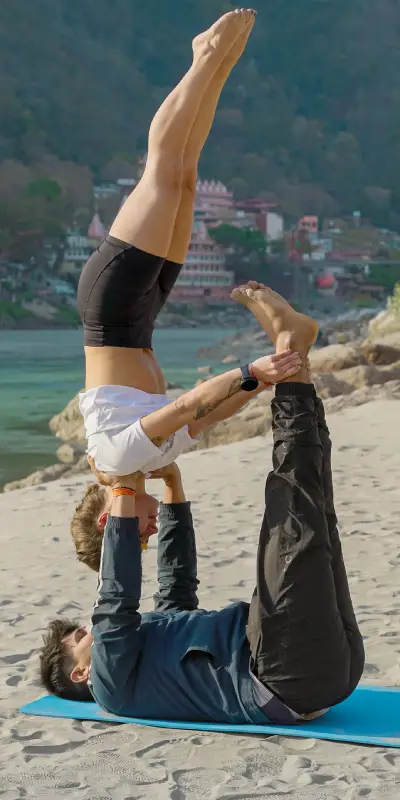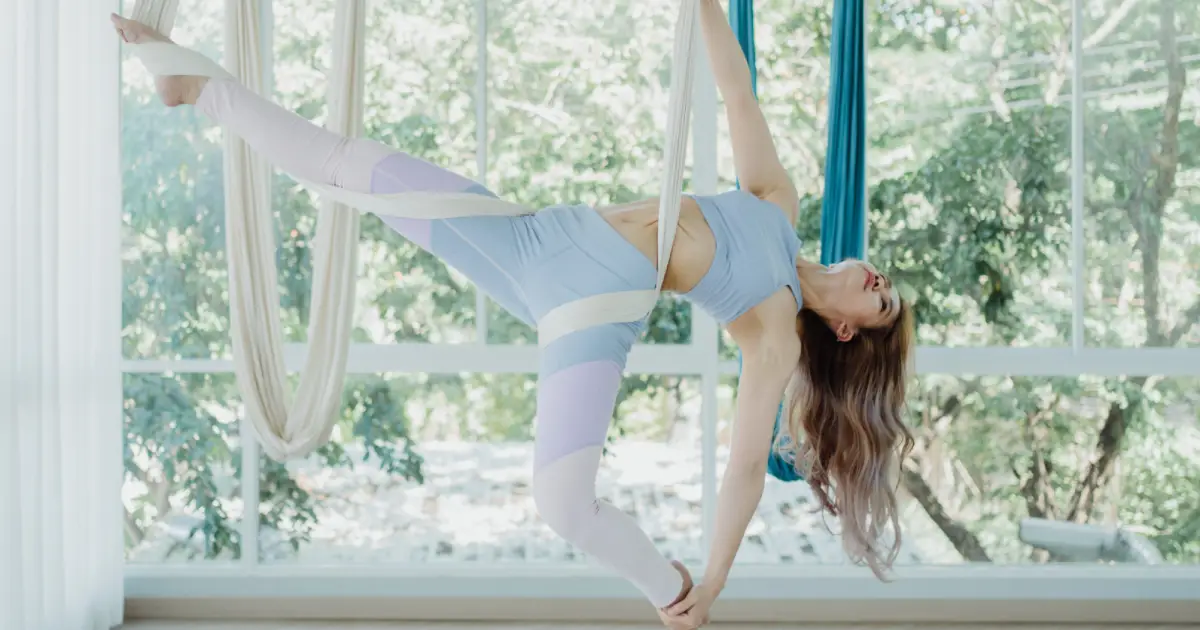
Get A Free Quote

Fundamentally, aerial yoga raises the three basic tenets of yoga—mindfulness, breath, and alignment—to unprecedented heights. It has a silk hammock dangling from the ceiling, which allows for playful inversions and deeper stretches while offering support and assistance.
Iyengar yoga popularized props like blocks and straps, but he also experimented with hanging students in rope swings for more profound stretches. Using silk harnesses rather than ropes, these early prototypes helped pave the way for the development of antigravity yoga in the late 1990s.
The first authentic yoga swing with handles and foot holds appeared in the UK in 2001. By 2011, “aerial yoga” and the well-known hammock had become global phenomena, with devoted studios and teachers.
Thus, the origins of aerial yoga can be traced to Iyengar’s inventive use of props, which developed into a well-liked form that combines the challenge and support of silky hammocks with traditional yoga in a graceful manner.
Increased range of motion and flexibility: By supporting your body, the hammock or silks enable you to extend stretches further and achieve new heights of flexibility.
Strengthening your upper body and core: Aerial poses work muscles you would not normally use, which tones your arms and shoulders and strengthens your core.
Better spinal alignment and decompression: The hammock’s inversion relieves pressure on the spine, lowering back pain and encouraging proper alignment.
Cardiovascular exercise that burns calories: Aerial yoga can be surprisingly difficult. It increases heart rate and burns calories while you enjoy yourself.
Stress reduction and mindfulness: Aerial yoga’s flow and focus offer a welcome diversion from the stresses of everyday life, encouraging calm and awareness.
Increased self-expression and confidence: Learning new aerial poses and overcoming your fears fosters playful self-expression and increases confidence.
Better balance and coordination: The instability of the hammock tests your balance and coordination, which improves your overall control.
To ease you into your first class, try these foundational poses from Aerial Yoga:
The soft support of the hammock eases pressure and tension by cradling the spine. Those who suffer from sciatica, persistent joint problems, or back pain may find this particularly beneficial. Picture yourself upside down, feeling the intervertebral discs gently decompress and your spine lengthen.
You can safely reach deeper stretches and activate your muscles in new ways with the help of the hammock. This is gentle on your joints and results in better core strength, flexibility, and balance. Imagine yourself extending into a warrior pose with grace, leaning on the hammock as your muscles grow longer and your core becomes more powerful.
Proprioception, or the awareness of your body in space, is enhanced by the suspension experience. You can move with more control and precision thanks to your increased awareness, which also helps you avoid injuries and maintain better posture. Imagine being aware of every little detail of your movements as the hammock helps you achieve the best possible alignment in each pose.
Proprioception, or the awareness of your body in space, is enhanced by the suspension experience. You can move with more control and precision thanks to your increased awareness, which also helps you avoid injuries and maintain better posture. Imagine being aware of every little detail of your movements as the hammock helps you achieve the best possible alignment in each pose.
Most programs require a prior 200-hour Yoga Teacher Training (YTT) certification. This establishes the foundation for comprehending basic yoga principles and safely assisting students while performing various asanas.
Pick a respected course of study that fits both your budget and learning preferences. These courses cover extensive aerial techniques, safety precautions, lesson planning, and teaching methodologies. They usually run between 50 and 200 hours.
After training, you should think about becoming certified by an established organization. This adds credibility and opens doors to wider employment opportunities.

Posted: 17 January, 2024
Renowned for his expertise in yoga and its philosophy, Sajan Negi brings over 15 years of experience in guiding individuals on their transformative journey towards holistic well-being. With a Master’s degree in Yoga and a life dedicated to personal growth, Sajan Negi combines ancient wisdom with modern insights to inspire physical strength, mental clarity, and spiritual peace in his students.